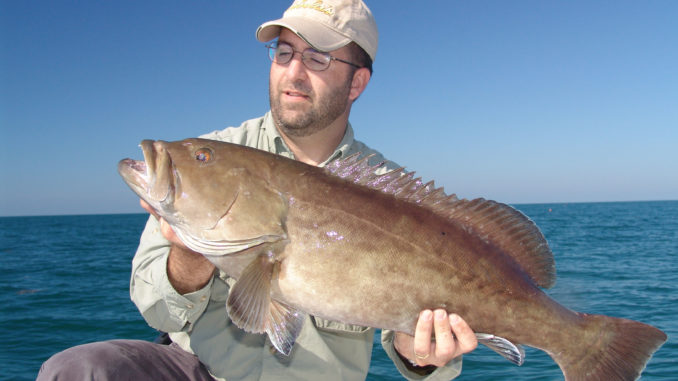
Murrells Inlet offshore captains signal love of big reef-dwellers as May arrives
Grouper are popular throughout the world, usually occupying a big niche in seafood restaurants. While they are highly recognized on the dinner menu, few anglers ever make it onto an offshore boat to see one of these fish face to face. If they did, they would surely remember how much energy it took to winch them out of deep water.
Luckily for anglers living along the eastern seaboard, the recreational grouper season opens this month, just in time to catch these fish in an eating mood. The waters off South Carolina’s coast are prime places to tussle with one of these hard-fighting delicacies.
When the season opens May 1, charter captains around Murrells Inlet, S.C., put them back on the daily menu. Tommy Werner, who runs the Wild Thang, will be one of the first captains in the area to target these fish.
“We have fantastic grouper habitat within a short run of Murrells Inlet,” said Werner (843-798-9100). “We regularly catch them at the Vermillion and the William Goldfinch (reefs) this time of year.”
Werner’s favorite spots are a little more difficult to find on marine charts than named offshore reefs equipped with marker boys.
“We catch plenty of fish at the generic reefs, but I prefer small, livebottom areas barely recognizable on a marine chart,” he said. “These areas tend to hold bigger fish because they don’t get as much pressure as the named reefs.”
The livebottoms contain scattered coral and rock outcroppings that provide cover and food for invertebrates, small fish and larger apex predators. Complete food webs arise around livebottom areas that make it perfect for grouper.
Typically, grouper move shallower and closer to the shoreline during the winter to spawn, then migrate back to deep water in the spring as the waters warm. In May, Werner hones in on reefs and live bottom in 80- to 90-foot depths.
Grouper are among a crowd of reef scavengers that will readily forage on just about anything they can find. Any meal-sized fish swimming around reef structure occupied by grouper will have an instant shortened life expectancy.
“Live bait is the best, especially for gags, and I prefer live menhaden if I can get it this time of year,” Werner said.
Live pinfish or anything he can jig up around a reef will quickly tempt a grouper on these offshore hot spots. Werner will use a Carolina-style rig with a 12-ounce egg sinker, a 125-pound test leader and a 9/0 Trokar hook.
For the best results, Werner recommends powering through the first few seconds after the bite to pull fish 15 to 20 feet away from the structure.
“The faster you get them off the reef, the better off you will be, especially with scamps. They are notorious for shutting off after the third bite or if you lose a fish in the structure,” he said.

